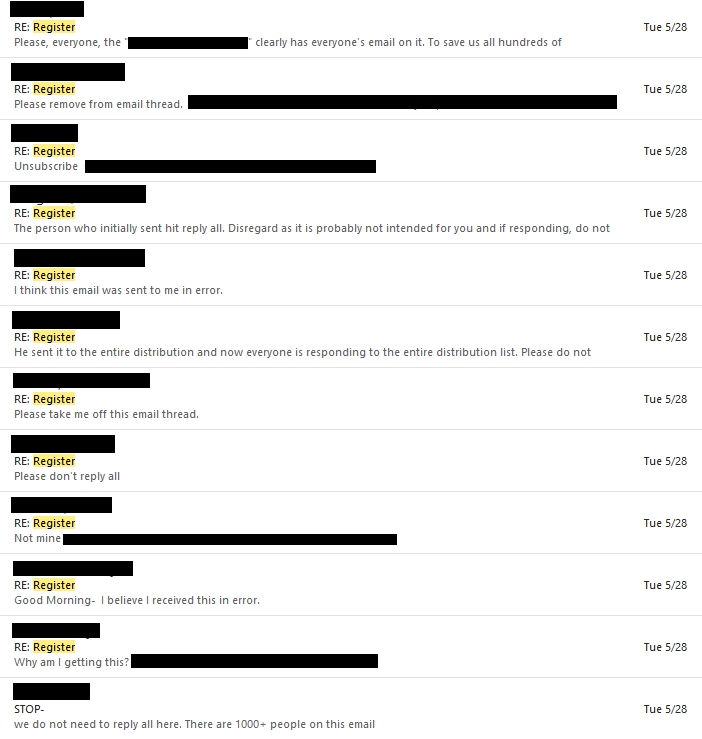Even Congress is not immune from the scourge of reply-all email chains. At least that was the case last Tuesday when an employee at the House of Representatives sent out a message—presumably by accident—to an email group called “Work Place Rights 2019.” The group contained every single House employee’s contact. The result? Ninety minutes of reply-all email madness.
Emails flooded thousands of staffer inboxes with complaints like “none of us wanted to receive this e-mail [sic]” and “we do not need to reply all here. There are 1000+ people on this email,” and “some one did a boo boo.”
“Your normal reply-all drama unfolded,” says Aaron Fritschner, a staffer for Virginia Congressman Don Beyer. “With some people replying ‘I think you got the wrong person,’ some people replying ‘stop emailing me,’ some people replying ‘stop replying all.’” Each email fueled the flame it attempted to extinguish.
Email lists are regularly created when information pertaining to all employees (like healthcare enrollment) needs disseminating, says Fritschner. The email list in question was created after new rules passed requiring sensitivity training for employees. Usually, the contacts on email lists aren’t made available to staffers. However, for unknown reasons, this thread was an exception. When one staffer sent an email asking about sensitivity training registration, they accidentally messaged every person on the list. Subsequently, a flurry of reply-alls demanded to know why they’d been contacted, followed by an outbreak of reply-alls accosting those reply-alls—and so on.
“Honestly, I’m surprised this doesn’t happen more often,” Fritschner says. “I’ve certainly had the experience of sending an email to the wrong person within the address book.”
After two hours, the email thread burned out and folks caught the hint to not reply, rather than emailing everyone to stop replying. Take a look at an excerpt from the thread:
























